CPH:DOX has seen “an overwhelming number of people watching films” at its new online platform, festival director Tine Fischer has told Screen.

With the new platform only streaming titles to those with Danish IP addresses, Fischer said the response from Danish audiences has saved the festival from financial ruin.
“If we had completely cancelled the festival then we would have seriously looked into a year with a difficult, very delicate financial situation,” she said. “Of course we will never have the same numbers as last year, but the online streaming platform means we are perhaps halving the loss we could have had, or maybe cutting it by 70%.”
The online offerings meant Denmark’s entire population could take part for the first time, with films priced at €6 per stream. The festival has negotiated film rights to keep the online platform running longer than the original festival would run, until April 5.
Fischer is proud that Danish audiences have come together to support the 2020 edition.
“When we start counting, I think we will have at least the same number of people watching films as last year,” she said. (This counts families watching films together from one stream, not just number of streams. The festival had more than 100,000 admissions at its 2019 edition.)
“There is a civic engagement around the programme which we never had before,” she added. “Audiences are taking ownership of it. The digital festival gives us an audience which we would have never had and we don’t want to lose them [at future festivals].”
CPH:DOX was due to run March 18-29 as a physical festival with hundreds of screenings, talks and live events including concerts. When the Danish government shut down public gatherings on March 12, the festival announced that it had to cancel its physical activities. Staff worked around the clock to move some parts of the festival and its industry activities online.
For the public online screenings, an initial 40 titles launched on Festival Scope, but with high demand during the first 24 hours they started building a larger offering of titles online (now at 150) with Shift72, an online streaming company based in New Zealand. That worked well because CPH:DOX staff in Copenhagen could work all day on inputting metadata and the team in New Zealand would then wake up and take over.
As with SXSW, CPH:DOX’s juries also watched films remotely and deliberated. “They did it in such a professional way and really took care with it,” Fischer said of this year’s jurors.
Online industry engagement
The festival’s industry activities also weren’t shuttered because of the coronavirus crisis. Globally, the festival has been something of an inaugural test case for a physical industry event trying to go online at the last minute.
CPH:DOX’s head of industry Katrine Kiilgaard told Screen, “Feedback on us rolling out digitally has been overwhelming and supportive from the entire industry.”
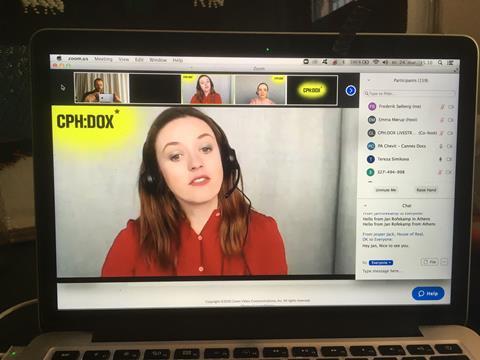
At CPH:Forum, which lets dozens of new projects pitch to industry, the festival ultimately realised that it couldn’t host the actual pitches in a meaningful way for both the pitchers and the listeners. This was partly due to the issue of pitching live with participants across too many time zones.
But it was still able to host 450 private meetings between the film teams and industry experts using Zoom, which is about half the number of physical meetings it usually hosts across three days of CPH: Forum. They have sent out matchmaking guidance for participants to set up a further 450 meetings in coming weeks.
“It was a crazy puzzle that didn’t get any easier from being in different time zones,” Kiilgaard said. “But overall it was really a success. Those people inside the Forum for those three days said they really did have that feeling like they were at a festival.”
Some feedback was that the meetings “were more focused” than they might have been in a bustling, loud physical room as usual. CPH:Forum also fostered a feeling of online community, as it had its giant “lobby” of people waiting to be put into their individual meetings.
“Everyone who had a pre-scheduled meeting would come into the lobby, then the team would beam them into their room,” said Kiilgaard. She noted they would also chat and catch up with other industry colleagues while in the lobby.
That sense of community was also felt on Zoom at CPH:Forum’s opening session and at the closing session when award winners were announced, and some people Zoomed in sipping champagne in their homes.
“It gives you a sense of shared space,” Fischer noted, adding that CPH:DOX will explore ways to develop that community space going forward.
The CPH:Conference, run in partnership with Documentary Campus, ran across five days on a modified schedule of three to six hours per day, using the platform Webinar Jam and then streaming live on Facebook. The sessions are also now archived on CPH:DOX’s YouTube channel.
On Facebook, there were often several hundred viewing live at one time, and Kiilgaard said that catch-up viewings had also attracted 5000-7000 views per day. She hopes that the festival will learn from this in future, and make some of the physical conference sessions available online in some form.
“It’s great if we can incorporate some of that,” she said, noting that the physical conference in past years did not do any streaming or recording.
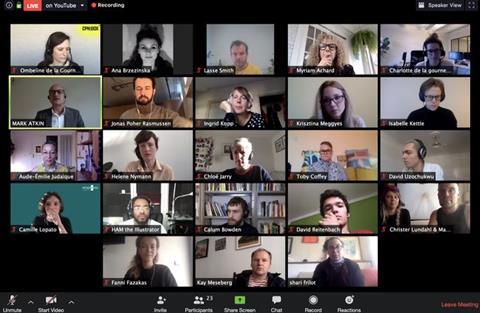
She said other lessons had been learned about moving sessions online. “How you plan the content for a live event in a common room means you have the attention of the audience in a different way than from doing it online,” she said. “The curators did a great job rejigging that for an online space.”
She added, “We could still learn a lot about how do you create a perfect online conference.”
CPH:Lab also moved virtually for its mentoring and feedback and then pitches at funding platform Kaleidoscope. That even meant a new audience of potential investors and backers that might not have been able to join the physical pitch in Copenhagen.
Accredited industry have been given access to a Cinando platform that streams 165 CPH:DOX films, and that offering is open until the end of April.
Looking beyond 2020
Fischer says the triage work they did this year will benefit the festival in future years. “The lessons we learned from going digitally from many activities will be a strong part of the DNA of the festival and the industry activity in the coming years,” she said.
Kiilgaard added, “Some parts [of the industry programme] are not easy to create in the digital space but I think we should combine it at least for people who can’t be in Copenhagen in person. We can rethink how we can be more online.”
But Fischer is also sure that the festival can thrive again physically in 2020. “To experience everything you do in a digital space for a few months makes you understand the value of social spaces and collective experiences in real life. This doesn’t only apply for the film industry.”
Especially for the filmmakers, they are grateful they could offer the films online, but that doesn’t replace a world premiere screening. “They also say it’s a huge loss to have not met the audiences,” Fischer said.
She added, “I actually think the movie houses and cinemas will see growth when they open again. For festivals, we have all these talks and debates after the films, and you want that back.”
She hopes this will inspire other festivals to discuss how things can work best in the future.
“Also because of climate change, it would be crazy to jump back to just business as usual. We’ll need to work structurally across festivals. Nobody wants to be that festival that goes from 20,000 delegates to 200. We need to solve it together.”


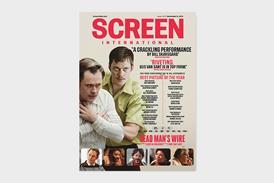
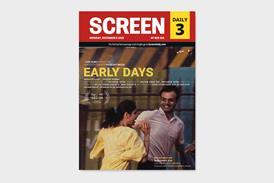












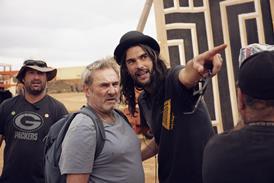







No comments yet